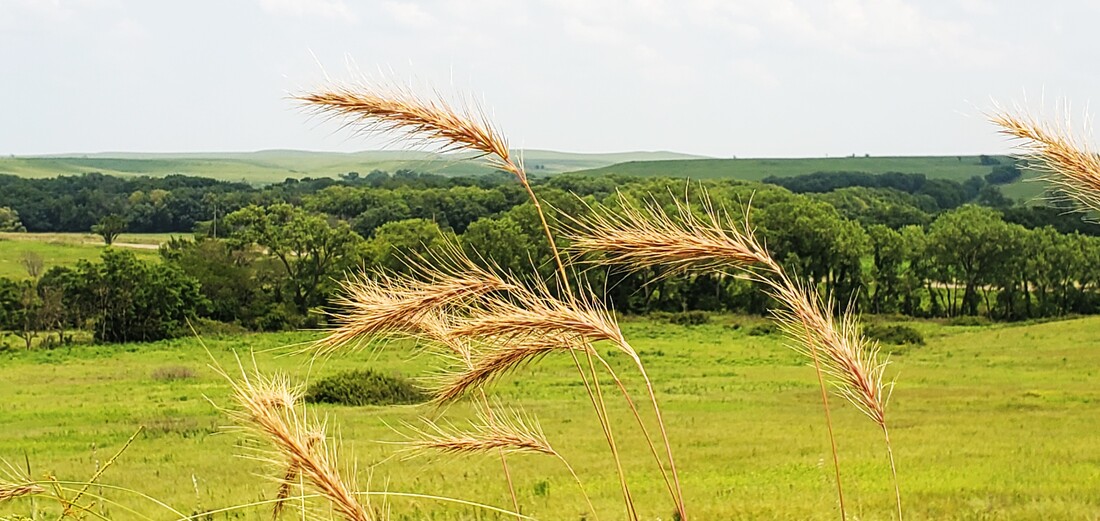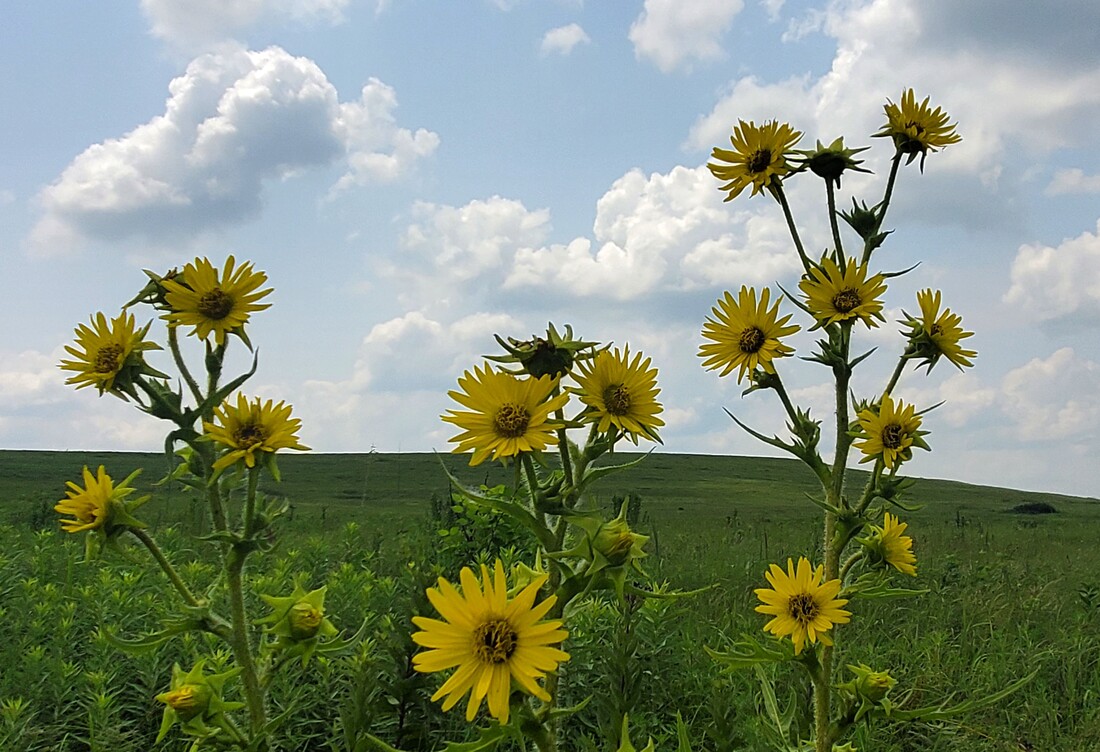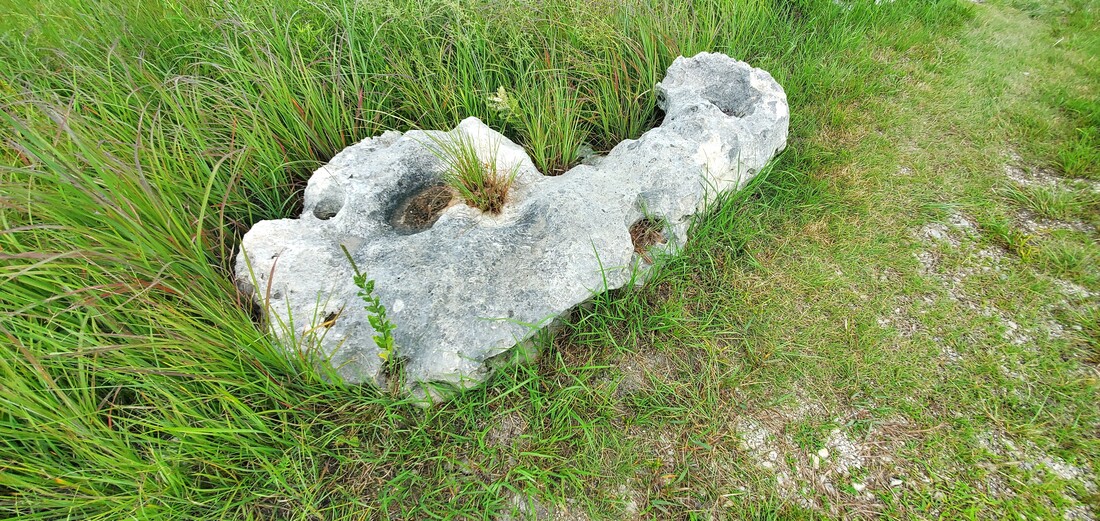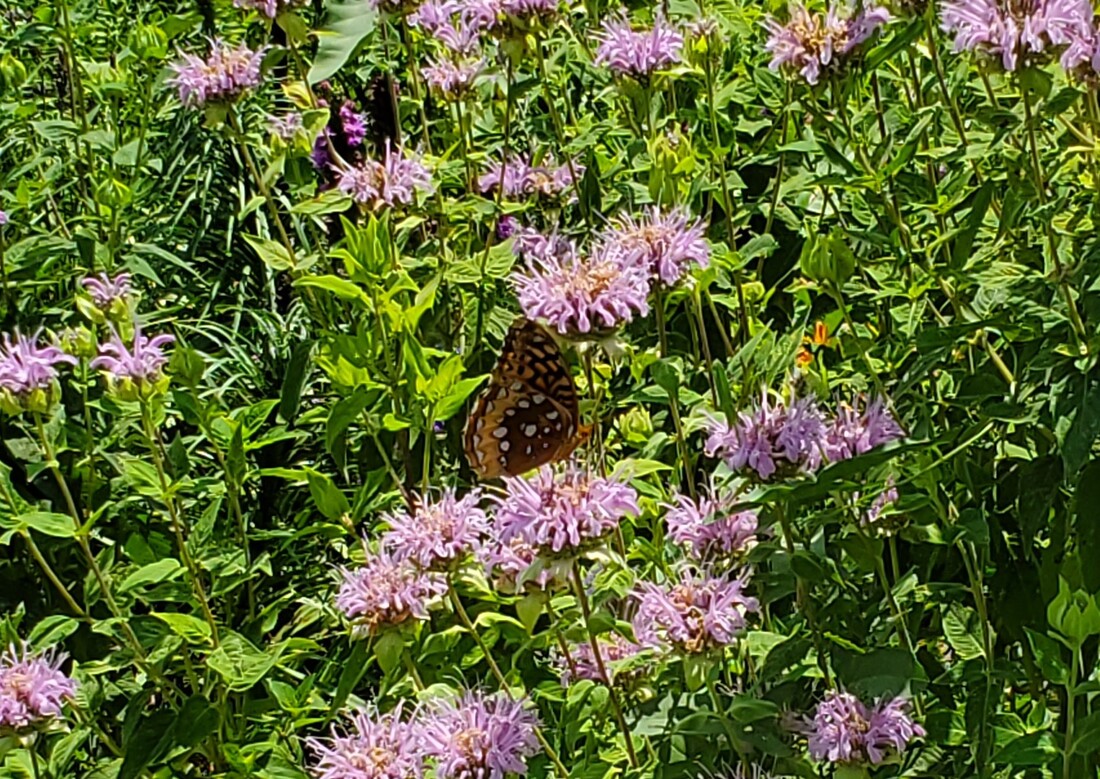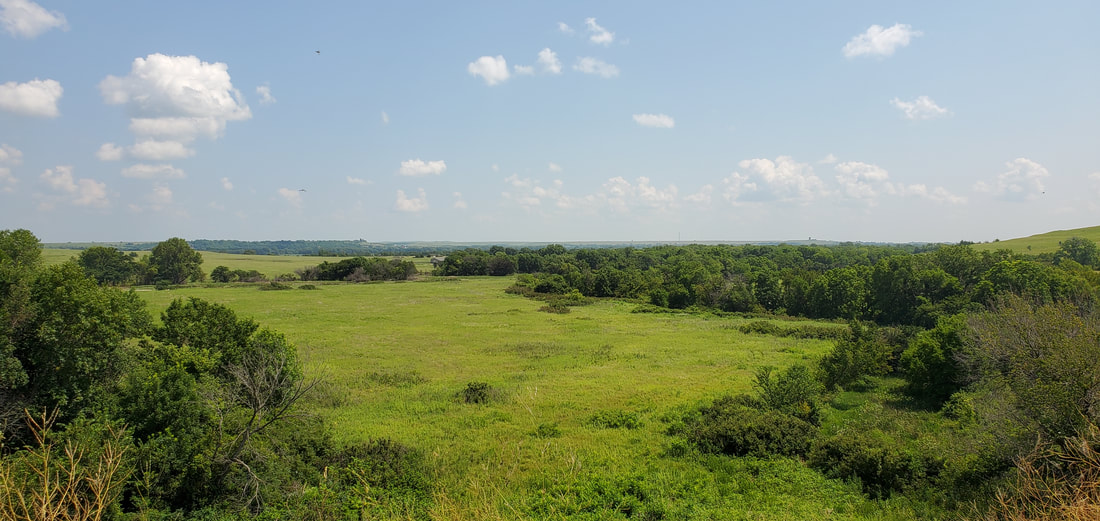“Red Buffalo is what the Plains tribes called prairie fire,” says Heather Brown, Chief of Interpretation and Visitor Services at the Tallgrass Prairie National Preserve in the Kansas’ Flint Hills region. Driving across the rolling landscape, Dianne and I could imagine bison and fire in equal measure leaping across these hills.
The Red Buffalo keeps the prairie alive. Prescriptive burning of the prairie regenerates grasses to their nutritional best. “Prairie thatch blocks the sun from reaching the soil,” Heather explains, “squelching off new growth.” Fire puts the sun in contact with the land.
Prairie once covered 400,000 square miles of North America from the Rocky Mountains to the Mississippi River and beyond. Before Euro-American settlement, 30% of the North American landscape was grass-covered. Less than 4% of that original prairie has remained. The Flint Hills harbors 80% of that surviving prairie, stretching for 90 miles east-west and 160 north-south through most of east-central Kansas.
* * *
Author Willa Cather wrote, “It takes a soul to love the prairie.” At the Tallgrass Prairie National Preserve, Eric Patterson, Lead Park Ranger, is one such soul. Eric offers this advice to anyone who lacks the prairie eye: “Don’t expect things to leap out at you. The prairie isn’t one of those environments that will knock you over. It’s more subtle than that. On the other hand, it often offers a vast scenery where you can see for ten or twenty miles.”
But once you’re done looking at the vista, look at what’s in front of you. The Flint Hills sports 70 varieties of grasses and 400 wildflowers and other forbes. Wildflowers take turns blooming from late spring through fall, each attracting their own set of pollinators.
For those of us whose idea of grass is the lawn we mow every Saturday, it can be a steep learning curve. “Your front lawn at home is the definition of a disturbed landscape,” Eric laments, “a monoculture of plants that have just one skill.”
In fact, much of the skill of the prairie is unseen, underground. The root systems of prairie plants are vast, sinking ten to fifteen feet deep, enabling them to weather droughts and long, cold winters. Their thick, intertwining roots also hold the soil in place. “Three-fourths of the plants’ biomass is underground,” Eric explains. Above ground, the annual cycle of decay and regeneration of plant matter built up the Midwestern topsoil, in some places up to eight feet deep.
“Grasses are pretty resilient,” he continues. “If it’s dry, they simply slow their growth and store their energy in their roots. In wet periods the grasses grow more full and tall.” Prairie grasses are “the meek that have inherited the earth,” he says. “They don’t necessarily blow their own horn.”
The Tallgrass Prairie National Preserve manages a mere 11,000 acres of the Flint Hills’ 4 million prairied acres. Most of the Flint Hills’ natural prairie lies in private ownership and is maintained by cattle doing the former work of bison, eating and trimming the prairie grasses and setting the stage for regrowth.
The proximity of limestone bedrock to land surface is the main reason that so much of the prairie remains intact here. In the Flint Hills, limestone lies just inches below the soil and frequently protrudes, ensuring that much of the Flint Hills was never plowed, except in the stream bottoms where the soil covering was thicker.
Instead, the Flint Hills prairie has been cattle-grazed since the arrival of Euro-American ranchers, In the absence of bison, cattle grazing protects the prairie to a reasonable degree. “Ranchers recognize that they are dependent on the long-term health of the grass,” Eric maintains. “If the grasses fail, so do they. And grasses do need to be grazed. Bison were the natural grazers, but now that task falls to cattle.”
There are differences between the grazing habits and behaviors of bison and cattle—with cattle being rougher on the landscape. Bison, for example, might graze a section bare and then not return to it for several years, while cattle are typically confined to limited, albeit large, acreages. Ranchers simply have to “find the delicate balance between economic and ecological needs,” says Eric.
The Tallgrass Prairie National Preserve grazes both cattle and bison. Its trails make no pretense of separating the hiker from the bison by fence or vehicle. “Keep your distance”—about 100 yards—is all the warning given on refuge signs, with no particular suggestions about how to do that should a bull decide to charge. But in the heat of our July visit, the bison had apparently retreated to some tucked away glen. One bull was visible in the distance, lounging in the sun and then rising to eat, turn around, dust him himself off, and lounge again. We kept our eyes glued on him, out of wonder and respect, and to make sure that he stayed in place. What we would’ve done if he’d bolted, I have no idea. Dianne can probably run faster than me.
But the trail did offer evidence of bison wandering. Here and there was a “buffalo wallow” formed by bison rolling in the grass to cool and dust themselves off. Their weight in the soft prairie soil creates a hollowed-out depression that in turn becomes a tiny mud-pond in the next rainstorm, a haven to an array of smaller prairie creatures. In this totally second-hand manner, bison aid other life forms on the prairie.
At various times throughout the growing season, the prairie bursts with coneflowers, wild bergamot, flowering splurges, showy evening primrose, and more, each taking is individual turn racing across the prairie as red, orange, yellow, and purple buffaloes. Prairie grasses include big bluestem, sideoats grama, Indian grass, hairy grama, and switchgrass.
The Preserve’s ridge top trail makes for impressive vistas. The land stretches out for miles, with only a scattering of barns and other outbuildings visible in the vast horizon beyond the Preserve. Nothing here but wind, a prairie non-enthusiast might deduce.
But the wind, too, was a Red Buffalo racing across the expanse, bending the grass tips in waves that rolled across the hills. You just have to stop to watch it.
-- April 2023
